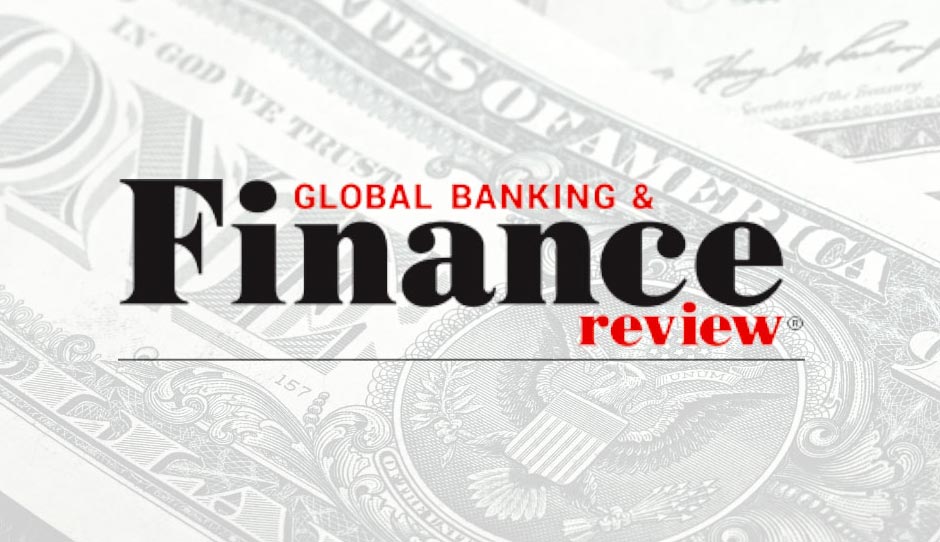Interviews
Vneuron: Anti-Money Laundering Compliance Made Simple, Fast and Cost-Effective

Vneuron Risk & Compliance is a cloud-based, award-winning compliance solution provider, bringing an immediate response to financial institutions’ AML compliance needs. Its platform Reis™ RCS is a one-stop-shop for all AML compliance. It is selected by top-tier banks and insurers across EMEA, screens data for more than 27 million end customers and is filtering more than $10bn worth of transactions annually.
Wanda Rich, editor of Global Banking & Finance Review, spoke with Mahmoud Mhiri, the executive partner of Vneuron Risk & Compliance. He has more than 15 years of experience in technology development and the digital transformation of financial institution processes. Being very passionate about compliance, he participated in the launch of more than 50 projects of top-tier banks and insurers in Europe, Africa and the Middle East to respond to major AML compliance challenges.
Please tell us more about Vneuron Risk & Compliance and what led to its creation.

Mahmoud MHIRI
Executive Partner, Vneuron Risk & Compliance
Vneuron Risk & Compliance is a spin-off of the bigger company that was founded in 2007. Vneuron, being a technology provider for more than 14 years, is helping companies from all industries transform and digitalise their processes. With the necessary capabilities and field experience, Vneuron Risk & Compliance was created when the need for an AML compliance solution was raised. With more than 5 years of operations, Vneuron Risk & Compliance successfully assisted more than 50 clients in their AML compliance programs. Its solution Reis™ RCS is a complete platform, providing an immediate response to all AML compliance regulations.
What do you see as the main challenges to internationalisation that companies face?
The main challenges to internationalisation are mainly the particularity in local regulations and how to adjust compliance systems to the changing regulations.
Specific regulatory requirements of every sub-industry, which can limit the expansion of systems that can’t adjust to custom regulatory requirements.
It is also important to mention that each sub-industry has its specific regulatory requirements. Compliance specificities vary from one financial institution to another and from parent institutions to subsidiaries depending on regional jurisdiction. With that being said, if technologies are not flexible enough to adjust to the particularity of each institution, it will be very challenging for it to expand and internationalize.
How has the change in business operations as a result of the current pandemic affected the needs of businesses?
The pandemic changed business operations; thus, business needs are no longer the same. With the need for full digitalisation of all processes worldwide, we are witnessing an increase of online payments, online account opening and other services concerning the financial sector in particular. With that being said, financial institutions had an imminent need for contemporary compliance solutions to combat all sorts of new financial crime patterns arising through digital channels.
When it comes to selecting the right anti-money laundering system, what are some of the key points businesses should consider?
There are several key factors for an effective Anti-Money Laundering system (AML). First, the vocation of the solution – meaning to choose a pure player, not a generalist one, to ensure the robustness of its features and inclusiveness of its modules.
Also, the effectiveness of its filtering algorithm – opt for a solution that has an effective filtering algorithm capable of taking into account all typographical, phonetic and differences due to transliteration from original languages, thereby improving the quality of results, reducing false positives, minimising the processing burden on analysts and reducing compliance costs.
Then, the multidimensionality of the risk matrix – check that the solution allows the integration, parameterisation and calibration of a multidimensional risk matrix so that all the client’s KYC data can be analysed in detail, and the client’s risk profile – ideally supported by a rating – can be established and appropriate due diligence measures can be taken.
For more information about the key points to consider when choosing your AML system, read their white paper.
Why should companies select Vneuron Reis™ RCS? What are the different components that Vneuron Reis™ RCS covers?
We are proud to say that our solution is comprehensive and covers all AML regulation compliance. We facilitated the mission of the compliance officer by providing them with all the tools they need:
- Full KYC lifecycle and on-boarding automation, including
- PEP/Sanctions screening with online and batch features with built-in integration to major compliance content providers (Refinitiv and Dow Jones)
- Risk-Based Approach with automatic customer risk scoring and classification capabilities based on a configurable risk matrix
- Domestic transactions and cross-border payments screening
- Transaction monitoring and AI-powered customer profiling
In addition to these capabilities, Reis™ RCS is provided with an integration workbench which allows it to connect with a wide span of systems. It features a developer-ready full API to connect with systems of all generations.
Furthermore, Reis™ RCS enables total customisation of its dashboards, KYC forms, reports, workflows and analytics interfaces with no code needed.
What are your future plans for development?
We are planning to expand to the LATAM and APAC markets in the course of the next 12-24 months. We are also planning to support cryptocurrency AML regulation requirements.
For more information consult Vneuron’s risk and compliance website.

-
Business4 days ago
docStribute appoints ex-Group CIO of Newcastle Building Society as Non-Executive Director
-
Technology4 days ago
How to Use AI to Optimize Customer Relationships
-
Business4 days ago
What Every Small Nonprofit Needs to Know About Form 990-N
-
Finance4 days ago
stc Bahrain and Aleph Zero Partner to Advance Blockchain DePIN Across the Gulf Region







